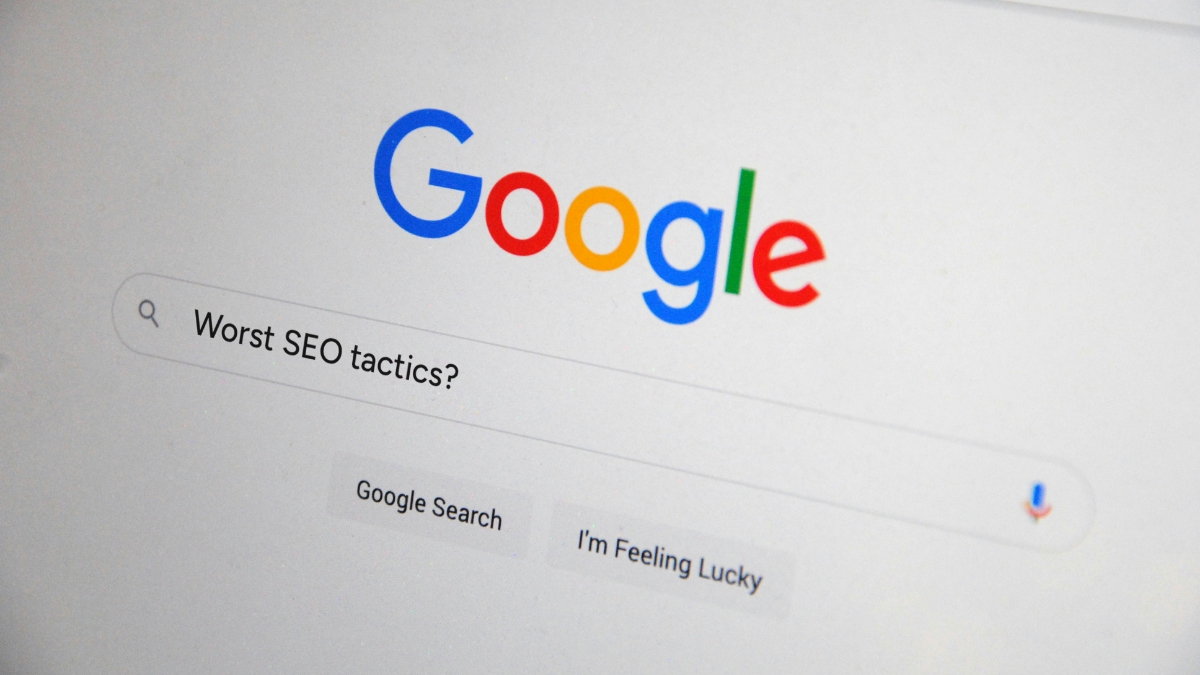Search Engine Optimisation (SEO) is a complex and evolving field, where the effectiveness of your strategies can have a direct impact on your online visibility. While there are many proven techniques to boost your search rankings, some tactics—though they might seem effective in the short term—can actually harm your SEO efforts in the long run.
Here are five common tactics that could be damaging your SEO and why you should avoid them.
1. Keyword Stuffing
What This Means:
Keyword stuffing is the outdated practice of excessively using a specific keyword in on-page content to artificially boost rankings for that keyword. This practice often results in unnaturally repetitive text that aims to rank for specific terms. Originally effective in the early days of search engines, it’s now considered a spam technique by Google and is explicitly prohibited in its spam policies.
Why It Harms SEO:
Modern search algorithms have evolved significantly beyond simple term frequency analysis. They now employ sophisticated methods to assess content quality and relevance, disregarding keyword density as a significant ranking factor. In fact, keyword stuffing can lead to penalties and consequences for a website’s SEO efforts. This results in:
- Poor User Experience: Keyword-stuffed content is difficult to read and will frustrate users, leading to higher bounce rates, plus search engines – like Google – consider user experience as a factor in ranking.
- Search Engine Penalties: Search engines like Google have become smarter at detecting keyword stuffing. They may penalise your site or even remove it from search results if they consider your content spammy.
Try This Instead:
Instead of keyword stuffing, SEO best practices now emphasise natural and valuable content creation. Key strategies include strategically placing primary keywords in important areas like titles, headings (H1), and meta descriptions without overdoing it. Content should be written in a natural tone, incorporating synonyms, variations, and long-tail keywords where appropriate to enhance relevance and user experience.
2. Using Duplicate Content
What This Means:
Duplicate content refers to identical or very similar content appearing on multiple pages or websites. This can happen unintentionally through content syndication, or deliberately to manipulate rankings.
Why It Harms SEO:
- Diluted Page Authority: When the same content is spread across multiple pages, search engines may struggle to determine which page is the original or most relevant.
- Penalties for Plagiarism: Search engines may penalise sites that use duplicate content, which will affect your rankings and visibility.
Try This Instead:
Use original content and ensure each page on your site offers unique value. If you need to syndicate content, use canonical tags to signal the original source to search engines, and make sure to provide additional, unique information.
3. Ignoring Mobile Optimisation
What This Means:
Time and time again, we discuss the importance of ensuring your website is optimised for mobile. If you are not yet sure what mobile optimisation is, it involves adjusting your website’s design and functionality to ensure it provides a good user experience on mobile devices.
Why It Harms SEO:
- Mobile-First Indexing: Google now uses mobile-first indexing, meaning it primarily uses the mobile version of your site for ranking and indexing. Not to mention over 58% of global website traffic is now via mobile*, so ignoring mobile optimisation will definitely kill your chances of ranking anywhere on search engines.
- High Bounce Rates: A site that isn’t mobile-friendly may cause users to leave quickly, increasing bounce rates which negatively impacts your SEO because search engines will view your site less favourably.
Try This Instead:
Implement responsive design to ensure your site adapts to different screen sizes. Test your site on various devices and use Google’s Mobile-Friendly Test tool to identify and fix issues.
4. Neglecting Technical SEO
What This Means:
Technical SEO involves optimising your website’s technical aspects to ensure that search engines can crawl, index, and understand your content effectively. This includes site speed, sitemaps, and internal linking.
Why It Harms SEO:
- Crawling and Indexing Issues: Without proper technical SEO, search engines might struggle to crawl and index your site, which will negatively impact your rankings.
- Slow Page Speed: Google considers page speed a ranking factor so technical issues like slow page load times will harm user experience and affect rankings.
- Broken Links: Broken links can prevent search engines from accessing important content on your site, impacting your site’s overall authority and rankings.
Try This Instead:
Regularly audit your website for technical issues using tools like Google Search Console and PageSpeed Insights. Address issues such as broken links, slow loading times, and ensure proper use of sitemaps and structured data.
5. Over-Reliance on Social Media Signals
What This Means:
Some businesses focus excessively on social media signals—such as likes, shares, and followers—believing these metrics will directly impact their SEO.
Why It Harms SEO:
- Indirect Impact: While social media can drive traffic and increase brand visibility, it doesn’t directly influence your search engine rankings. Search engines primarily use content quality and backlinks for ranking so if you focus too much on social media metrics, you might end up neglecting essential SEO practices on your website.
- Potential for Spammy Practices: Attempting to artificially inflate social media metrics—such as buying followers or using click farms—can be risky and if detected, your website and account can be penalised by both social platforms and search engines.
Try This Instead:
Integrate social media as part of a broader marketing strategy. Use it to engage with your audience and drive traffic to your website, but focus your SEO efforts on content quality, backlinks, and technical optimisation.
Conclusion
SEO is a multifaceted discipline that requires a balanced approach. Avoiding these harmful tactics and focusing on strategies that prioritise content quality, user experience, and technical health will help you build a strong, sustainable SEO foundation. Regularly review and update your SEO practices to align with current best practices and search engine guidelines, ensuring your website remains competitive.
*Source: https://www.statista.com/statistics/277125/share-of-website-traffic-coming-from-mobile-devices/
Improve Your SEO and Boost Your Search Rankings.
If you're looking to enhance your SEO, download our free checklist below or contact us to schedule a comprehensive Technical SEO Assessment. We’ll identify weaknesses in your website and provide tailored solutions to ensure that search engines can access, crawl, and index your site efficiently.








